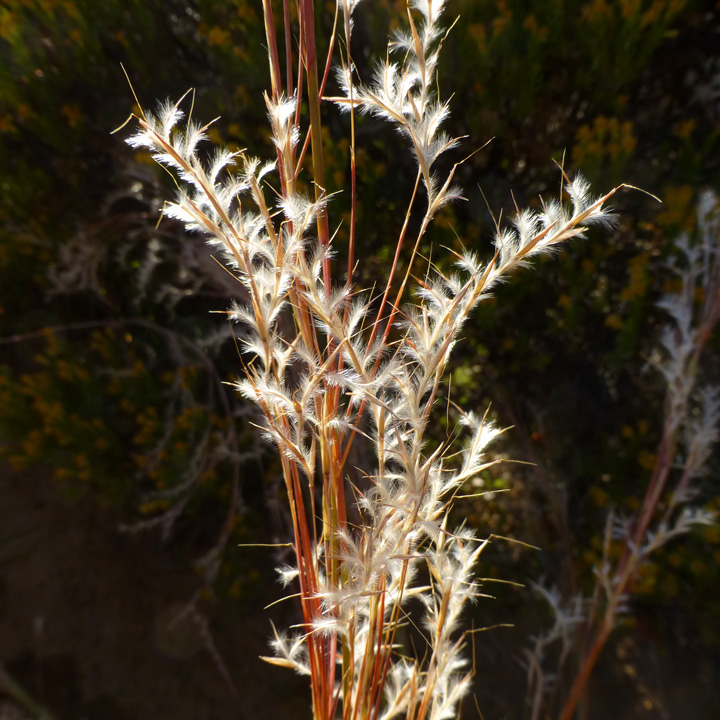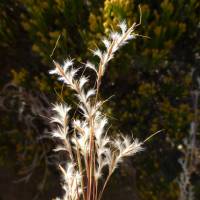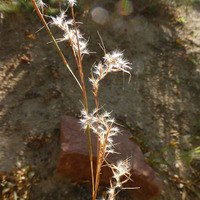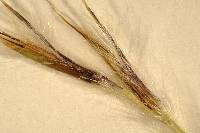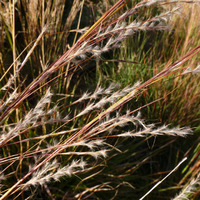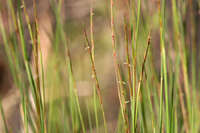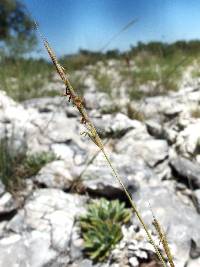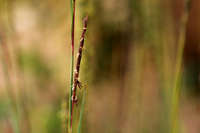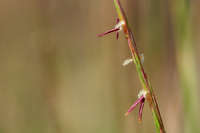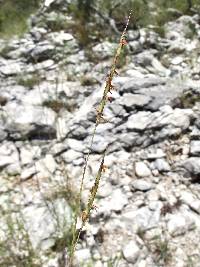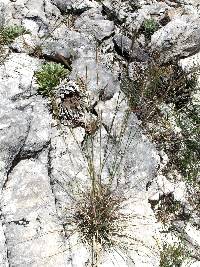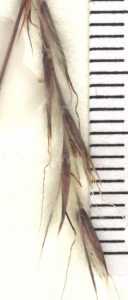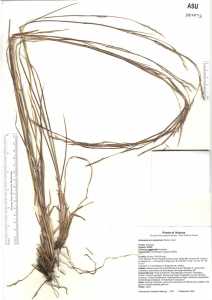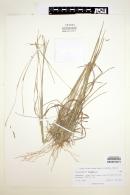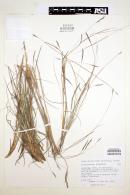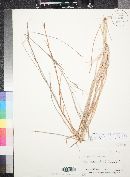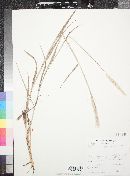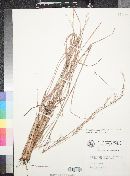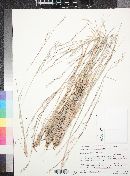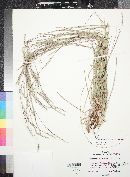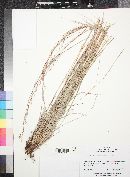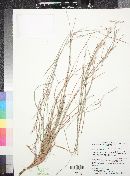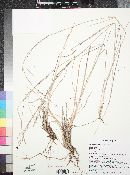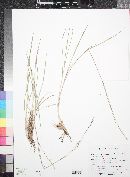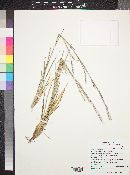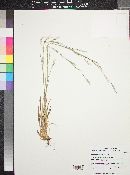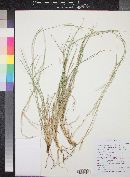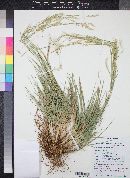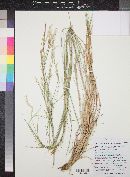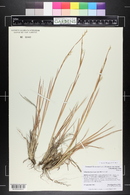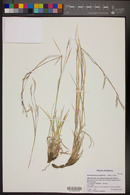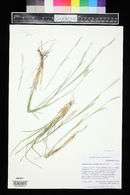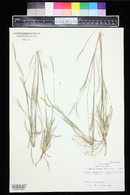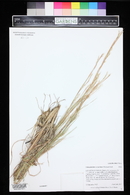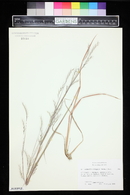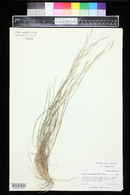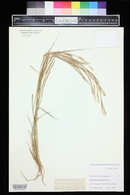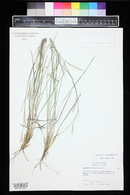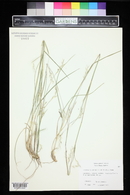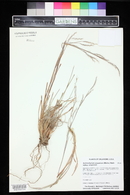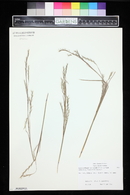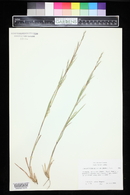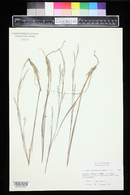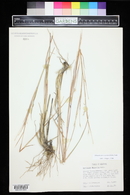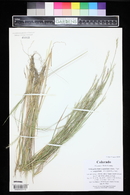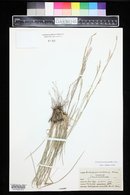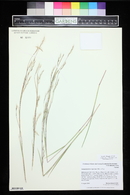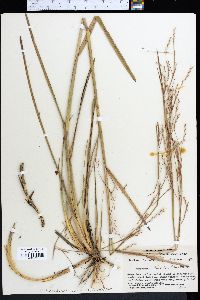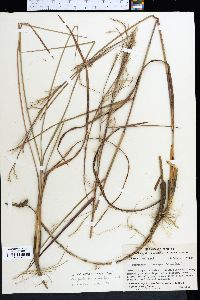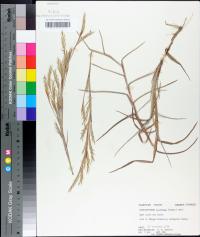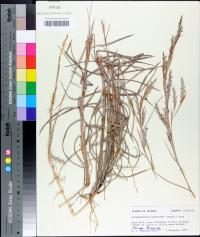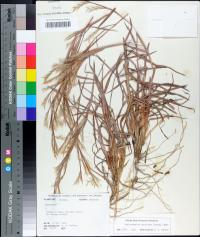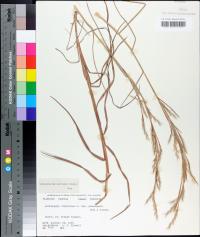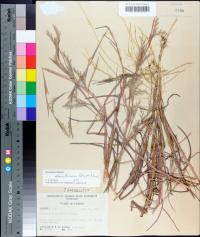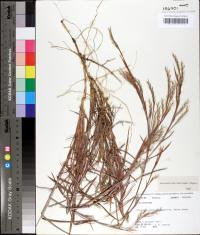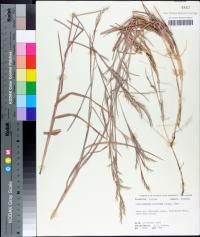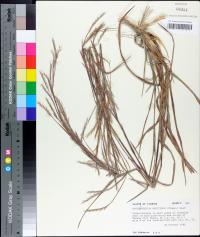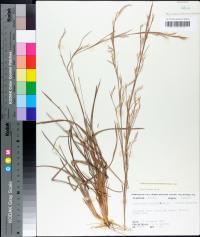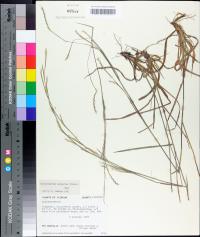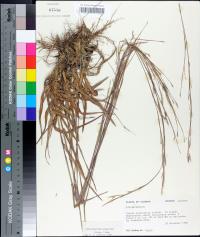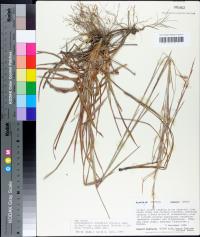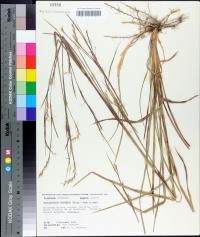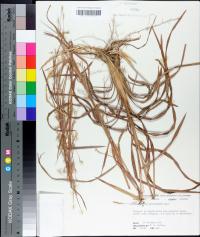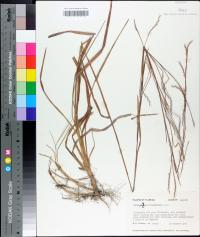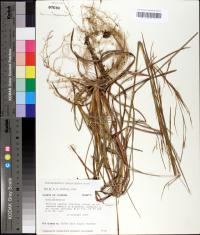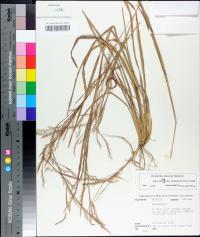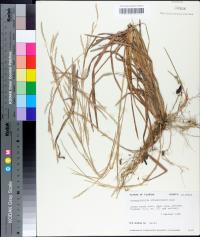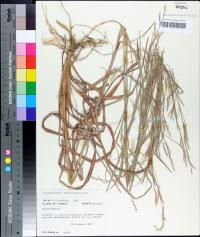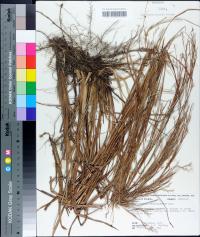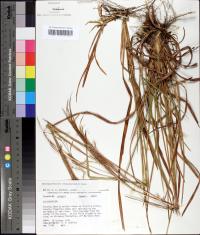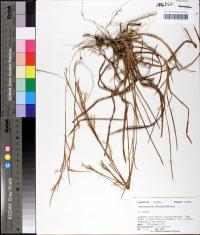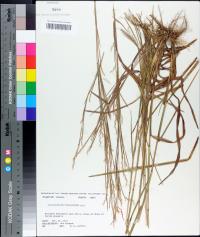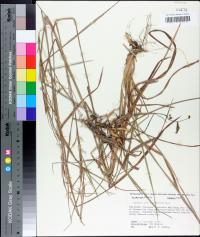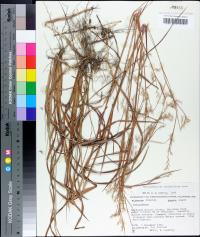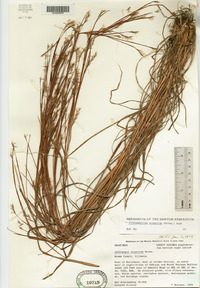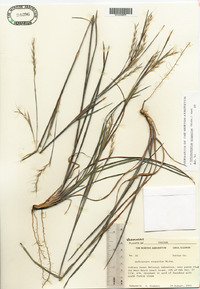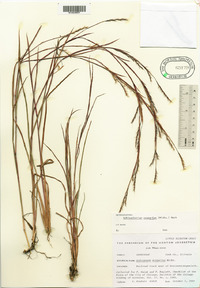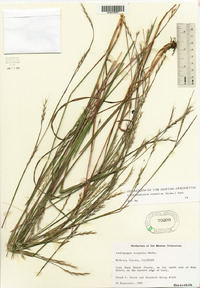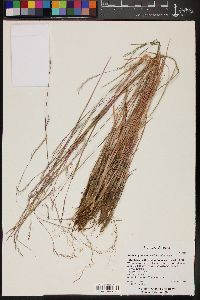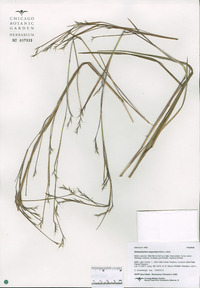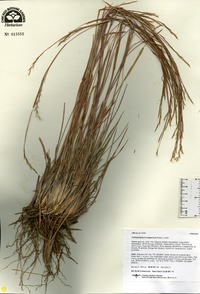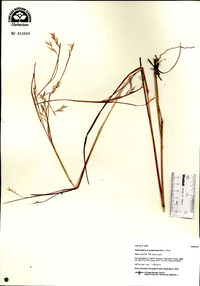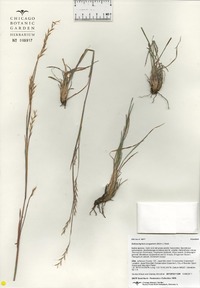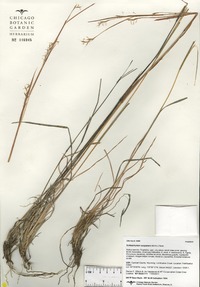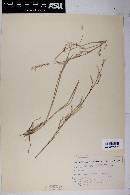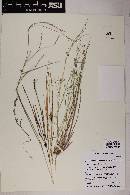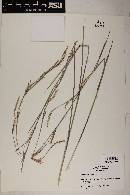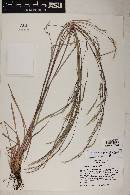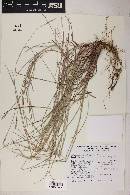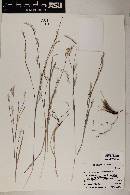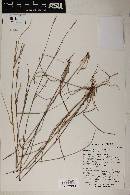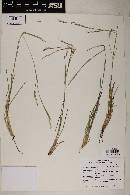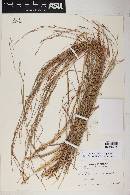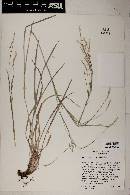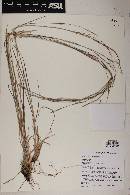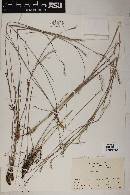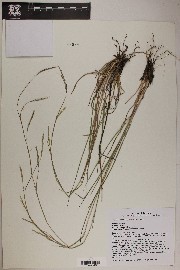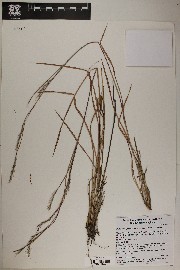Schizachyrium scoparium
|
|
|
|
Family: Poaceae
Little False Bluestem, more...little bluestem
[Andropogon flexilis Bosc ex Poir., moreAndropogon halei , Andropogon maderensis Swallen, Andropogon neomexicanus , Andropogon praematurus f. hirtivaginatus Fernald, Andropogon praematurus f. praematurus Fernald, Andropogon preamaturus Fernald, Andropogon preamaturus f. hirtivaginatus Fernald, Andropogon purpurascens Muhl. ex Willd., Andropogon scoparius f. calvescens Fernald, Andropogon scoparius f. scoparius Michx., Andropogon scoparius subsp. euscoparius Hack. ex Beal, Andropogon scoparius subsp. genuinus Hack., Andropogon scoparius var. flexilis (Bosc ex Poir.) Hack., Andropogon scoparius var. genuinus Fernald & Griscom, Andropogon scoparius var. glaucescens House, Andropogon scoparius var. maritimus Hack. ex L.H. Dewey, Andropogon scoparius var. multirameus Hack. ex Gatt., Andropogon scoparius var. scoparius , Andropogon scoparius var. villosissimus Kearney, Pollinia scoparia (Michx.) Spreng., Schizachyrium acuminatum , Schizachyrium praematurum f. hirtivaginatum (Fernald) C.F. Reed, Schizachyrium scoparium f. calvescens (Fernald) C.F. Reed, Schizachyrium scoparium f. villosissimum (Kearney) C.F. Reed, Schizachyrium villosissimum (Kearney) Nash, Sorghum scoparium (Michx.) Kuntze] |
Plants cespitose or rhizomatous, green to purplish, sometimes glaucous. Culms 7-210 cm tall, usually 1-3 mm thick, not rooting or branching at the lower nodes. Sheaths rounded or keeled, glabrous or pubescent, sometimes glaucous; ligules 0.5-2 mm, collars neither elongate nor narrowed; blades 7-105 cm long, 1.5-9 mm wide, without a longitudinal stripe of white, spongy tissue. Peduncles 0.8-10 cm; rames 2.5-8 cm, partially to completely exserted, usually somewhat open; internodes 3-7 mm, usually arcuate at maturity, ciliate on at least the distal 1/2 (sometimes throughout), hairs 1.5-6 mm. Sessile spikelets 3-11 mm; calluses 0.5-1(2) mm, hairs 0.3-4 mm; lower glumes glabrous; upper lemmas membranous throughout, cleft to 1/2 their length; awns 2.5-17 mm. Pedicels 3-7.5 mm long, 0.1-0.2 mm wide at the base, flaring above midlength to 0.3-0.5 mm, straight or curving outwards. Pedicellate spikelets 0.7-10 mm, sometimes shorter than the sessile spikelets, sterile or staminate, unawned or awned, awns to 4 mm, when sterile, the lemma usually absent. 2n = 40. Schizachyrium scoparium is a widespread grassland species, extending from Canada to central Mexico. It is one of the principal grasses in the tallgrass prairies that used to dominate the central plains of North America. It exhibits considerable variation, much of it clinal. The following varieties are recognized because they are morphologically, ecologically, and geographically distinctive. Perennial tufted or rhizome-bearing herb 7 cm - 2.2 m tall Leaves: with open sheaths that are rounded or longitudinally ridged, hairless to hairy, often covered with a whitish waxy coating (glaucous). The membranous ligules are 0.5 - 2 mm long, while the blades are 7 cm - 1.05 m long and 1.5 - 9 mm wide. Inflorescence: terminal and axillary, consisting of 2 - 8 cm spikes. Fruit: a caryopsis. Culm: 7 cm - 2.1 m long, 1 - 3 mm across. Spikelets: either stalkless or stalked. The stalkless spikelets are bisexual or sterile, 3 - 11 mm long, with two florets. Stalked spikelets sterile or male, 0.7 - 10 mm long, with one floret. Glumes: longer than the florets, lance-shaped to linear, membranous. The lower glume surrounds the upper glume, has two light longitudinal ridges and is hairless. Florets: borne on stalkless spikelets have sterile lower florets that are reduced to transparent lemmas, and bisexual upper florets with three anthers and an upper lemma that is membranous, cleft to the middle, and awned (2.5 - 17 mm long). Those borne on stalked spikelets have male florets with transparent lemmas that may or may not be awned and sterile florets that usually lack lemmas. Similar species: No information at this time. Flowering: early August to late September Habitat and ecology: This species is characteristic of Lake Michigan foredunes. It can also be found on sandy barrens and dry, rocky, limy glacial hills. Occurence in the Chicago region: native Etymology: Schizachyrium comes from the Greek words schizo, meaning split, and achyron, meaning chaff. Scoparium means broom-like. Author: The Morton Arboretum FNA 2007, Gould 1980 Common Name: little bluestem Duration: Perennial Nativity: Native Lifeform: Graminoid General: Cespitose to rhizomatous bunchgrass, green to purplish, sometimes glaucous, with stems 7-200 cm, usually 1-3 mm thick, branching freely above, not rooting or branching at lower nodes. Vegetative: Sheaths rounded to keeled, glabrous to pubescent, sometimes glaucous; ligules 0.5-2 mm, collars neither elongate nor narrowed; blades 7-105 cm long, 1.5-9 mm wide. Inflorescence: Many terminal inflorescences, each consisting of a single pedunculate inflorescence branch (rame)bearing stalked and sessile spikelet pairs; peduncles 1-10 cm; rames 2.5-8 cm, partially to completely exserted from the upper leaf sheath; rame internodes 3-7 mm, ciliate with long hairs; pedicellate spikelets sterile or staminate, 0.5-10 mm, unawned or with awns to 4 mm; sessile spikelets 3-11 mm, 2-flowered, the lower floret reduced to a hyaline lemma, the upper floret bisexual;calluses 0.5-1(2) mm, hairs 0.3-4 mm; lower glume glabrous, upper glume membranous, upper (fertile) lemma membranous, cleft to 1/2 its length, with an awn 2.5-17 mm. Ecology: Oak and juniper woodlands, pine forest, and mountain meadows, from 5,000-8,000 ft (1524-2438 m); flowers July-October. Distribution: Intermountain, central, and eastern N. Amer., from s CAN to c MEX. Notes: Schizachyrium is a genus of perennial bunchgrasses with inflorescences consisting of a single branch (rame) lined with spikelets that are grouped in pairs, one spikelet sessile and fertile, the other pedicillate and sterile or staminate. The genus is distinguished from the similar and related genus Andropogon by the solitary rames; Andropogon species usually have more than one rame per inflorescence. The Schizachyriums in the southwest are incredibly similar to each other and quite difficult to tell apart using simple field-friendly traits. S. scoparium differs from S. sanguineum by having fertile lemmas that are cleft for half their length and a more open inflorescence with spikelets that diverge from the central axis at maturity, compared to S. sanguineum with lemmas cleft 3/4-7/8 their length and spikelets that remain appressed to the central axis at maturity. S. scoparium can be separated from S. cirratum by its spikelets, which have tufts of hairs on the back of the glumes, the tufts several mm long and visible to the naked eye. S. cirraum, in contrast, has inflorescences that appear glabrous to the naked eye, though hairs are present if you use a hand lens. S. scoparium also tends to be more freely branched in the upper part of the plant, near the inflorescences, compared to the other two species, and can grow as tall as 2 meters, while the other two species are 1 meter or shorter. Ethnobotany: Stem ashes used against syphilitic sores, used as insulation in shoes, and as switches in sweat lodges. Etymology: Schizachyrium is Greek word, meaning divided or cut chaff flower, while scoparium means broom-like. Synonyms: Many, see Tropicos Editor: SBuckley 2010, AHazelton 2015 Culms loosely or densely tufted, 5-12 dm, often freely branched above; herbage often glaucous; blades 3-7 mm wide; rames long-exsert, bearing 5-20 sets of spikelets on a straight or flexuous, white-ciliate rachis; glumes 5-10 mm; awn 7-14 mm, twisted near the base; sterile pedicels usually in pairs, densely ciliate, often spreading, each bearing a vestigial spikelet 3-10 mm (awn included); 2n=40. Dry soil, old fields, prairies, and open woods; N.B. and Que. to Alta., s. to Fla. and Mex. Abundant and highly variable, an important constituent of tall- and mixed-grass prairies. (Andropogon s.; A. praematurus, a smutted form of this or of some sp. of Andropogon) Three vars. with us. Gleason, Henry A. & Cronquist, Arthur J. 1991. Manual of vascular plants of northeastern United States and adjacent Canada. lxxv + 910 pp. ©The New York Botanical Garden. All rights reserved. Used by permission. From Flora of Indiana (1940) by Charles C. Deam This species occurs throughout the state in poor or impoverished soils and moist or dry, sandy soils, and is also rapidly becoming established in the better soils of the Tipton Till Plain. It is found on washed slopes and interdunal flats, in abandoned fields, and along roadsides and railroads. The extreme variability of this species has led authors to describe many forms. My Indiana specimens show a wide range of variability, yet I hesitate to refer any of my specimens to a variety. For example, about half of my specimens are glabrous, and the other half vary from those with a few hairs on the sheaths to those with a villous pubescence. Andropogon scoparius var. frequens, Andropogon scoparius var. littoralis, Andropogon scoparius var. polycladus, and Andropogon scoparius var. villosissimus have been reported from Indiana but Buhl (Amer. Midland Nat. 16: 250. 1935) refers all of them to the typical form. Plants along Lake Michigan, growing on the bases of the low dunes in West Gary, present, in the field,' a striking difference because they are smaller and very glaucous. However, an examination of the floral parts shows them to be identical, or nearly so, with the typical form. …… Indiana Coefficient of Conservatism: C = 4 Wetland Indicator Status: FACU Deam (1929): This grass while young is a valuable forage plant but as it grows old it is avoided by stock. However, in impoverished soils it will luxuriate where nothing else will grow. In the minimacid soils of abandoned fields in the southern part of the state this species will usually be found on the drier parts and Andropogon virginicus will ococupy the moister and wet parts. Andropogon elliottii is usually restricted to the drier situations. |
|
|
|

